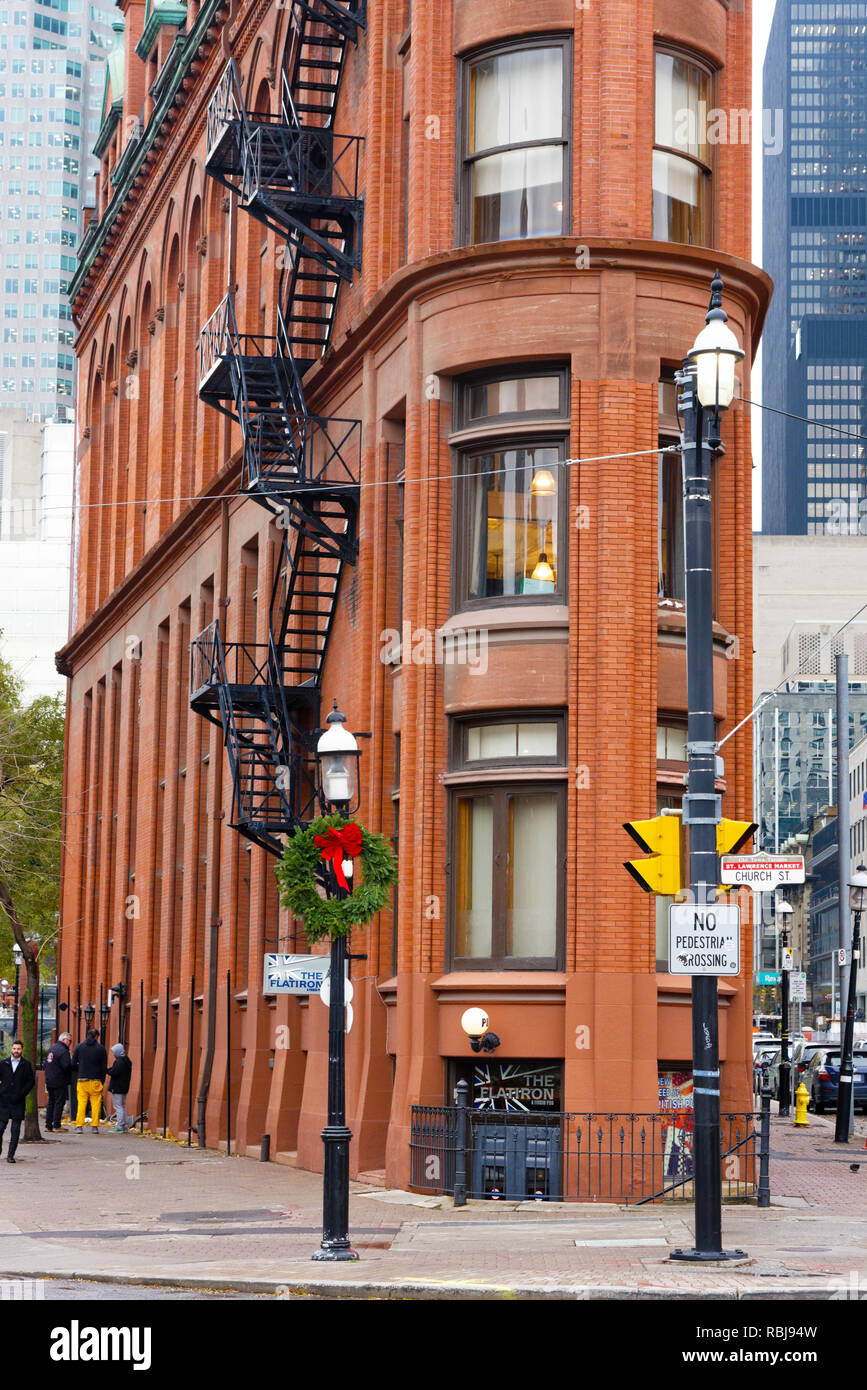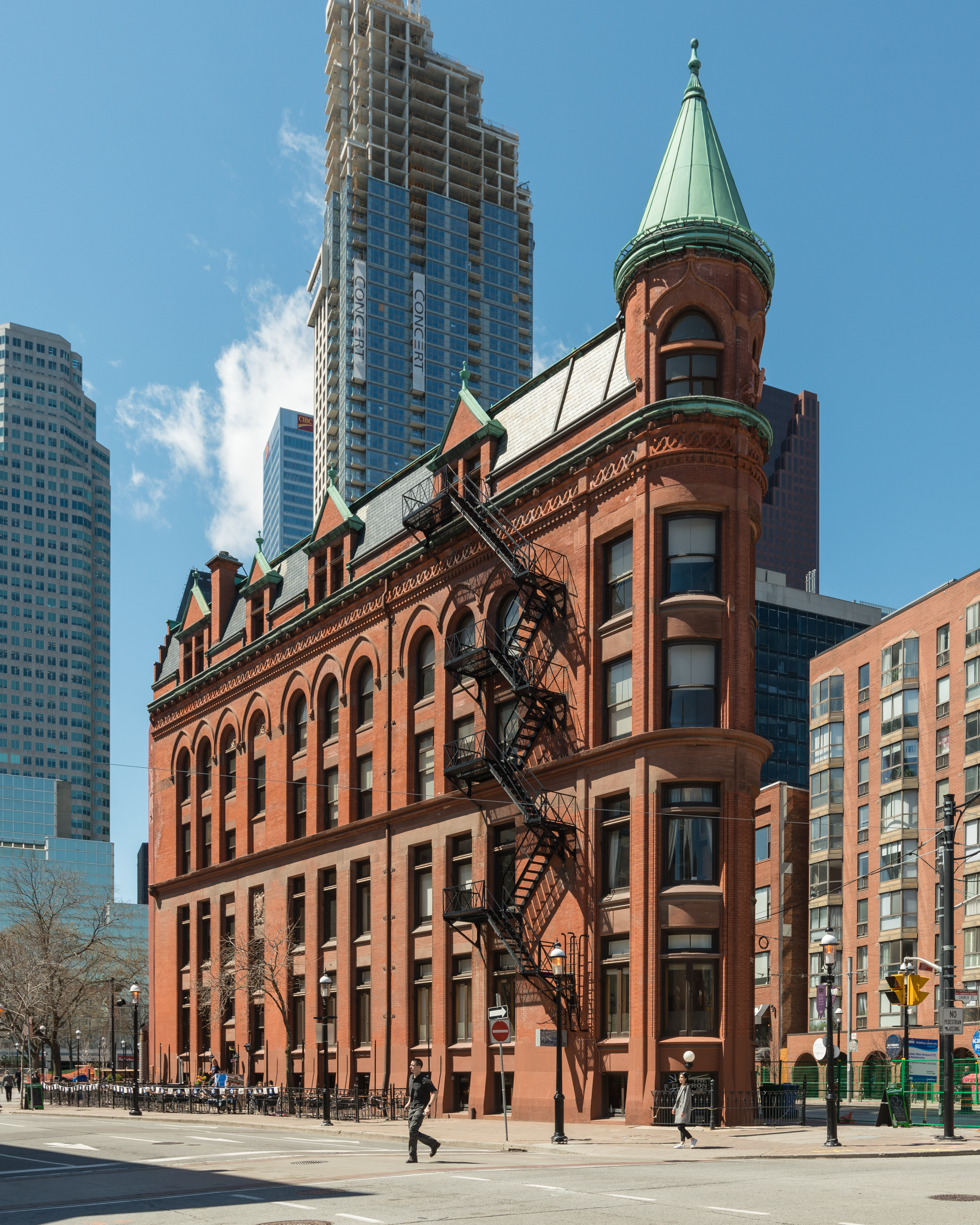Reveal the Rich Background Behind the Gooderham Structure in Toronto
The Gooderham Structure, an excellent indication of Richardsonian Romanesque architecture in Toronto, has a storied past that expands past its striking red brick façade. Commissioned by the influential Gooderham and Worts distillery in 1891, this building has actually played a crucial role fit the urban landscape of the St. Lawrence Market location. As we explore its beginnings, architectural significance, and social influence, one can not assist yet examine just how this landmark remains to affect Toronto's identity and heritage. What keys exist within its wall surfaces that add to its enduring legacy?

Origins of the Gooderham Structure
Building an enduring tradition, the Gooderham Building, also known as the Flatiron Building, became a sign of Toronto's building advancement in the late 19th century. The structure's origins trace back to 1891 when it was commissioned by the Gooderham and Worts distillery, among copyright's biggest distilling firms. Designed by designer David Roberts Jr. Gooderham Building address., the structure was distinctly positioned at the junction of Front and Wellington Streets, capitalizing on a triangular great deal created by the merging of these highways
The building's construction used local red block and terracotta, developing an unique aesthetic that matched the growing cityscape. Originally intended to house the Gooderham and Worts offices, the structure represented the prosperity of the distillery, which had actually come to be a significant factor to Toronto's economy. Notably, the conclusion of the Gooderham Building accompanied a period of fast urbanization that identified the era.
The establishment of this building treasure not just showcased innovative design however also laid the foundation for future advancements in Toronto. Today, it stands as a testimony to the city's abundant background and adaptability, continuing to draw in site visitors and admirers from around the world.
Architectural Value
The architectural importance of the Gooderham Structure extends beyond its distinctive flatiron form, showing the ingenious spirit of late 19th-century design. Completed in 1892, the framework exhibits the Richardsonian Romanesque design, identified by its durable masonry, rounded arcs, and intricate outlining. The strong use of contrasting materials, especially the warm red block and sedimentary rock accents, improves its aesthetic charm and demonstrates the craftsmanship of the era.
The building's three-story design is notable for its harmonious proportions and classy cornice, which add to its legendary shape versus the Toronto sky line. The narrow whole lot on which it stands posed unique difficulties, yet the designers, in this instance, developed a structure that made the most of the readily available space while preserving aesthetic balance.
Additionally, the Gooderham Building is a testament to the versatility of building style in metropolitan settings. Its enduring visibility in the middle of modern growths highlights the value of protecting historic design as a way of recognizing a city's past. Today, it remains a cherished landmark, showing both the building fads of its time and the developing story of Toronto as a lively city center.
Role in Toronto's Development
Arising as a vital player in Toronto's metropolitan landscape, the Gooderham Building contributed significantly to the city's advancement throughout the late 19th century. Created in 1892, this renowned edifice stood for not only the architectural ambitions of the time yet also the growing financial landscape of Toronto. The structure was initially created to work as a storehouse for the Gooderham and Worts distillery, which was just one of the biggest distilleries in the British Realm. Its calculated area at the crossway of Front and Wellington Streets facilitated the movement of products and services, highlighting the area's significance in the city's industrial tasks.
As the city increased, the Gooderham Structure came to be a crucial component of the St. Lawrence Market location, which was a center of trade and business. In significance, the Gooderham Building is not simply an architectural site; it played a pivotal role in shaping Toronto's identification and economic growth during a transformative period in its background.
Cultural Impact and Tradition
Gooderham Building's distinctive building design and historic value have actually left an indelible mark on Toronto's social landscape. As one of the city's most recognizable spots, its special flatiron shape and detailed brickwork exemplify the Victorian architectural fads of the late 19th century. This structure not just works as a visual anchor in the St. Lawrence community however likewise embodies the spirit of a burgeoning city during a period of financial development.
The building has actually ended up being a symbol of Toronto's rich background, motivating regional artists and digital photographers that look for to record its beauty. Its existence has actually cultivated a sense of community identity, contributing to the story of city advancement. Additionally, the Gooderham Structure has actually played a pivotal duty in the tourist sector, bring in visitors anxious to discover its fabled past and architectural elegance.
In addition to its visual charm, the building envelops a story of strength and adjustment, as it has transitioned with various usages over the years - Gooderham Building address. Hence, the Gooderham Building stands not only as a monument of building relevance yet likewise as a testament to the advancing social heritage of Toronto

Restoration and Conservation Initiatives
Many remediation and preservation initiatives have actually been taken on to ensure the Gooderham Building stays an important part of Toronto's building heritage. Originally finished in 1892, the structure has undergone substantial restorations to attend to architectural problems while retaining its historical stability. The most significant repair took place in the late 20th century when the building was carefully refurbished to fulfill contemporary safety and security standards without compromising its original design elements.
These efforts consisted of repairing the distinctive red-brick frontage, recovering the iconic triangular shape, and protecting the intricate stonework details. Furthermore, the structure's inside has seen cautious updates that respect its historical relevance, making sure that original attributes such as wooden light beams and attractive moldings are maintained.
The Gooderham Structure is now secured as an assigned heritage residential property under the Ontario Heritage Act, which helps secure it from unsuitable alterations. Area involvement has played an essential function in these preservation efforts, with local advocacy groups increasing read understanding concerning the structure's historical importance. Consequently, the Gooderham Structure stands not just as a useful space however also as a testimony to Toronto's rich architectural background and enduring cultural tradition.
Final Thought

Please visit one of our local supporters - Https://therepairstore.ca/iphone-repair/